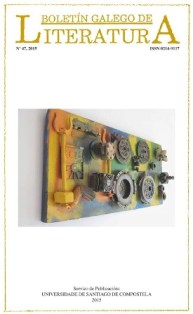The Hobbit from a Critical Literary Geography Point of View: Perspectives of Analysis
Main Article Content
Abstract
The construction of imaginary worlds with a graphical representation is, nowadays, a phenomenon of growing significance in the development of different artistic and cultural manifestations, such as literature, cinema or videogames. This essay intends to outline the diverse research approaches to establish the motifs and functions that underlie the creation of the imaginary geographies that bring to life epic fantasy books. With this goal, we start by offering a critical and valorative approach to the main perspectives of critical literary geography and imaginary geography, identifying the works of contemporary researchers that built the notions of literary geography and geographical imagination. Next, we study the possible applications of the outlined approaches in order to analyse the construction of imaginary worlds. Finally, we establish the possibilities that this kind of analysis opens up in the first epic fantasy book by British writer and philologist John Ronald Reuel Tolkien: The Hobbit or There and Back Again. This essay will allow us to determine how the differences between diverse social, cultural and political areas, as well as the differences between the real references and the narrative and cartographic projections of the actions allow us to study space as a factor that has an impact on the narrative. To conclude, the perception of the fictional space and its conformation, along with the author's social and cultural context, will be used to point out the spatial forms, their symbolical meaning and the social processess that are linked to determined imaginary creations.
Keywords:
Article Details
Most read articles by the same author(s)
- Alba Rozas Arceo, The figure of the fugitive in galician postwar literature , Elos: Revista de Literatura Infantil e Xuvenil: No 1 (2014)
- Alba Rozas Arceo, The Hobbit: a cartographic adventure , Elos: Revista de Literatura Infantil e Xuvenil: No 1 (2014)
- Alba Rozas Arceo, Blanca-Ana Roig Rechou (coord.). 2015. Historia da Literatura Infantil e Xuvenil Galega. Vigo: Edicións Xerais de Galicia. 503 pp. , Boletín Galego de Literatura: No 47 (2015)
- Alba Rozas Arceo, As mulleres como axentes literarias na LIX do século XXI , Elos: Revista de Literatura Infantil e Xuvenil: No 7 (2020)
- Alba Rozas Arceo, A porta de palla or the alternative vision of Santiago de Compostela by Vicente Risco , Boletín Galego de Literatura: No 59 (2021): 2º semestre






